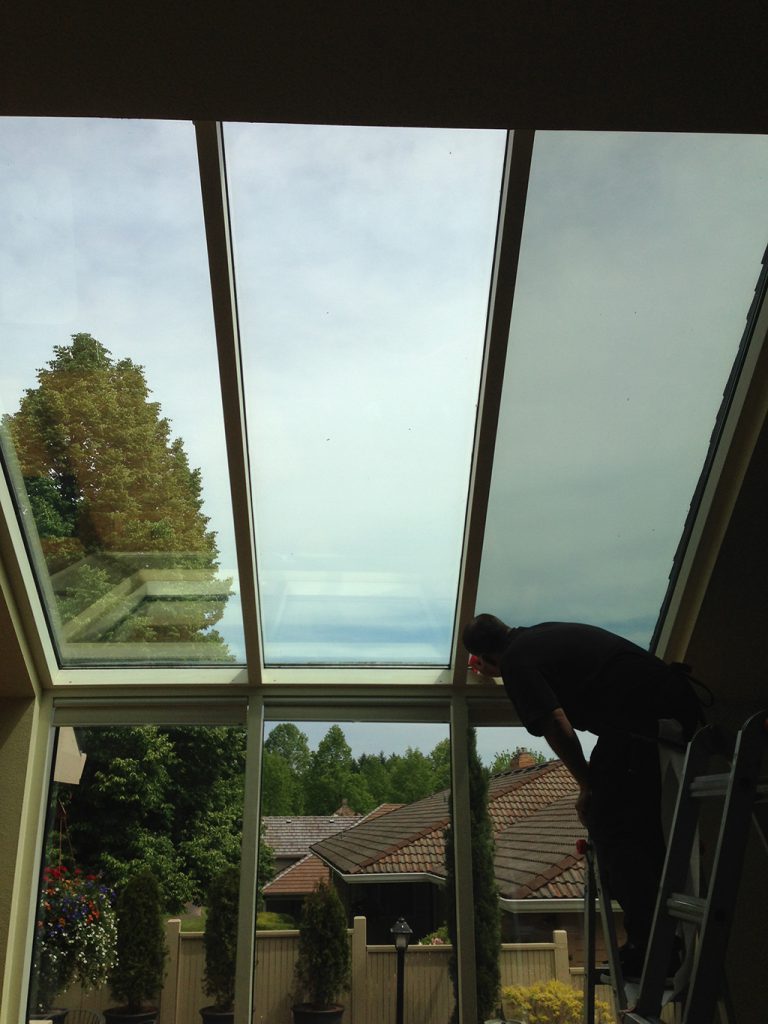(Updated October 2025)
How to Save Energy Without Sacrificing Comfort: Practical Improvements for a Greener, More Comfortable Home
Adding energy efficient home upgrades doesn’t always mean a full remodel or massive investment. Sometimes, small strategic upgrades can have a big impact—lowering your energy bill, reducing your carbon footprint, and improving year-round comfort.
Whether you’re remodeling or just looking to save energy where it counts, these energy efficiency improvements are smart, practical, and increasingly accessible—especially with new tax credit incentives and efficiency standards on the rise.
Quick Answer: What Are the Most Effective Energy-Efficient Home Upgrades?
Some of the most impactful upgrades include:
- Window film to reduce solar heat gain and energy loss
- Energy efficient windows or improved weather sealing
- Heat pump systems for both heating and cooling
- Updated insulation and air sealing
- Efficient water heaters like heat pump water heaters
- Smart thermostats and Energy Star Most Efficient appliances
Each of these upgrades supports a more comfortable home while helping you qualify for various energy efficiency tax credits and rebates.
Start With an Energy Audit
Before making any changes, it’s smart to understand how your home currently uses (and loses) energy. A professional energy audit evaluates your entire home—checking for leaks, poor insulation, HVAC inefficiencies, and more.
An audit provides a clear roadmap, prioritizing upgrades based on ROI, comfort, and environmental impact. In many areas, energy audits are subsidized or even free through local utilities.
Make Your Windows More Efficient
 Windows play a huge role in energy performance. Even newer homes can lose significant heat in winter and gain excess solar energy in summer if the windows aren’t performing well.
Windows play a huge role in energy performance. Even newer homes can lose significant heat in winter and gain excess solar energy in summer if the windows aren’t performing well.
Improve Window Sealing
Check for drafts and add insulation and air sealing where needed. Even simple steps like caulking and weatherstripping can reduce heat transfer and improve indoor temperature control.
Add Window Film
Professional window tinting is one of the most cost effective and low-disruption upgrades available. High-performance window films reduce up to 75% of solar heat, helping maintain stable indoor temperatures and reducing strain on your heating and cooling systems.
Window film works year-round: blocking heat and UV rays in the summer, and reducing radiant heat loss in the winter. It’s a smart alternative to full window replacement—especially when paired with a well-sealed frame.
Upgrade Heating and Cooling Systems
If your home still relies on an older furnace or central AC, upgrading to a modern heat pump system could dramatically reduce your energy use.
What Is a Heat Pump?
A heat pump moves heat rather than generating it, which makes it far more efficient than traditional systems. An air source heat pump can both heat and cool your home using a single system.
These systems are also eligible for significant rebates and the energy efficient home improvement credit, depending on your location and income.
Don’t Forget the Water Heater
Water heating can account for 15–20% of your home’s total energy use. Upgrading to a heat pump water heater (also called a hybrid water heater) is one of the easiest ways to save.
These models use electricity to move heat from the air into the water, consuming much less energy than conventional electric or gas heaters. The result? Consistent hot water, lower energy bills, and eligibility for rebates or residential clean energy credits in many areas.
Improve Insulation and Air Sealing
Proper insulation and airtight construction are essential for maintaining energy efficiency. Upgrades to insulation in your attic, walls, or crawl spaces—paired with targeted air sealing—can drastically reduce the workload on your HVAC systems.
Combined with window film and efficient appliances, insulation upgrades create a layered defense against energy loss. And yes, this type of work may also qualify for government rebates or tax incentives.
Explore Renewable and Sustainable Options
While they may not be the first upgrade you tackle, more homeowners are exploring residential clean energy solutions like solar panels, biomass stoves, and whole-home battery systems.
These options may carry higher upfront costs, but long-term energy savings—along with attractive tax credits—can make them worthwhile, particularly when paired with other efficient systems.
Why Window Film Is a Smart First Step
 Unlike some upgrades, window film installation is fast, non-invasive, and relatively affordable. It provides immediate benefits in comfort and efficiency, making it a perfect starting point—or complement—to other improvements.
Unlike some upgrades, window film installation is fast, non-invasive, and relatively affordable. It provides immediate benefits in comfort and efficiency, making it a perfect starting point—or complement—to other improvements.
Professional-grade film reduces heat gain, minimizes UV damage to interiors, and can be customized to maintain your home’s aesthetic. And when installed by a certified crew, the results are seamless and long-lasting.
If you’re unsure where to start your energy efficiency upgrades, window film offers a smart balance of energy savings, comfort, and ROI.
5 FAQs About Energy Efficient Home Improvements
- Is window tinting really effective for saving energy?
Yes—window film reduces solar heat gain and helps regulate indoor temperatures. It can significantly reduce cooling costs in summer and minimize heat loss in winter when combined with proper sealing.
- What is the energy efficient home improvement credit?
This is a federal tax credit available for qualifying upgrades, including insulation, heat pumps, water heaters, windows, and more. Credits vary based on system efficiency and installation details—check current IRS guidelines or consult a tax professional.
- Do I need to replace my windows to improve energy efficiency?
Not always. If your windows are in good shape, window film and proper sealing may provide comparable energy performance at a much lower cost.
- How much does a heat pump water heater save?
On average, a heat pump water heater uses 60–70% less energy than a standard electric model. That translates to hundreds of dollars in annual savings, depending on household size and usage.
- Are energy audits worth it?
Yes—a professional energy audit helps you prioritize upgrades, avoid unnecessary costs, and maximize incentives or rebates. It’s one of the smartest first steps toward a more efficient home.
Ready to Make Your Home More Energy Efficient?
Improving your home’s energy performance doesn’t have to be complicated—or expensive. Strategic upgrades like window film, insulation, and updated HVAC systems can provide measurable comfort, reduce energy costs, and help you qualify for valuable rebates and credits.
Since 1998, Pacific Window Tinting has helped Oregon homeowners improve comfort, protect interiors, and enhance efficiency with professionally installed window film solutions. Our in-house team is known for expert craftsmanship, honest recommendations, and top-tier customer service.
Contact Pacific Window Tinting today to schedule a consultation or learn more about energy-saving options for your windows. We’ll help you take the first step toward a smarter, more sustainable home.
